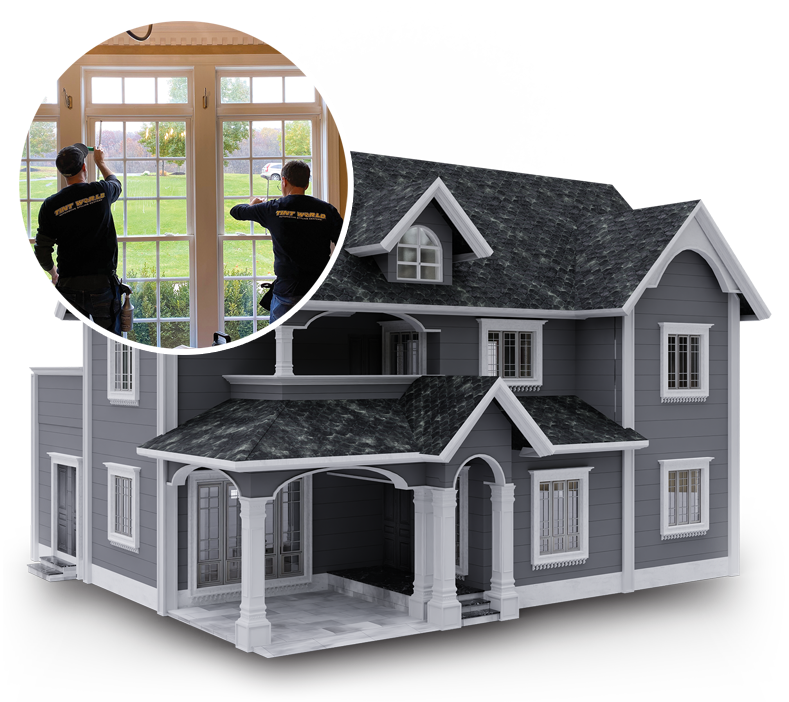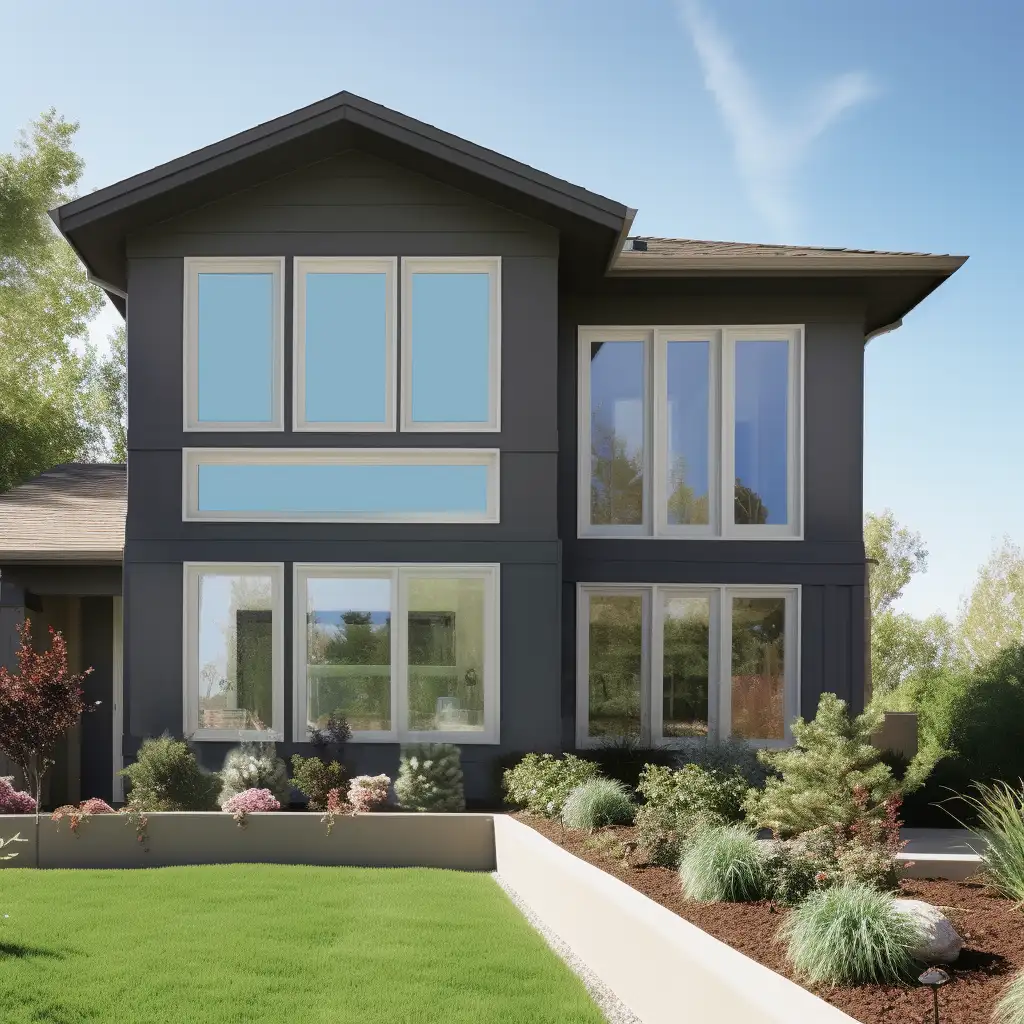Just How Residential Home Window Tinting Enhances Your Home's Energy Performance
Residential home window tinting provides an engaging option for homeowners seeking to improve power performance within their living spaces. By using specialized movies to home windows, it properly decreases warm transfer, therefore supporting interior temperatures and minimizing the requirement for extreme heating or cooling.
Understanding Window Tinting
Recognizing window tinting is essential for property owners seeking to boost both convenience and power effectiveness in their living areas. Residential Window Tint. Home window tinting includes the application of a slim movie to the inside or exterior surface of glass home windows. This film can dramatically regulate the amount of sunshine and warm that gets in a home, hence affecting indoor environment conditions
There are various kinds of home window tinting movies readily available, each with unique residential or commercial properties. The effectiveness of home window tinting is commonly gauged by its Visible Light Transmission (VLT) percent, which suggests just how much light can pass via the movie.
Benefits of Power Efficiency
Window tinting not only boosts appearances but likewise plays a substantial function in boosting energy efficiency within residential areas. By minimizing warmth transfer through home windows, tinted movies develop a more steady indoor environment, which can cause substantial decreases in power usage for home heating and air conditioning. This power performance translates right into reduced energy costs, giving homeowners with considerable long-term cost savings.

Furthermore, window tinting boosts the convenience of living areas. By lessening glow and blocking harmful UV rays, tinted windows produce an even more pleasurable environment, which can bring about boosted wellness for passengers. The protection versus UV rays also aids preserve furniture and floor covering from fading, adding to the longevity of household items.
How Tinting Functions
Tinting movies operate with a mix of innovative materials and modern technologies designed to regulate the amount of solar energy entering a home. Mostly made up of polyester, these movies commonly include metallic or ceramic fragments that soak up and reflect heat. This double capacity permits them to considerably minimize the penetration of ultraviolet (UV) rays and infrared radiation while allowing visible light to pass through.
The efficiency of home window tinting is gauged by its solar warmth gain coefficient (SHGC), which suggests just how much solar power is transmitted with the home window. Lower SHGC worths are more effective as they represent greater warm denial. Furthermore, home window colors can include a range of tones, permitting homeowners to personalize their aesthetic view publisher site choices while boosting energy performance.
In addition, these films function as an obstacle, stopping warmth loss throughout cooler months by reflecting interior heat back right into the living space. This thermal insulation result matches the air conditioning benefits acquired throughout warmer months, adding to a balanced indoor environment year-round. By handling solar power effectively, residential home window tinting not just boosts convenience yet likewise plays a vital duty in reducing energy consumption and decreasing energy expenses.
Picking the Right Color

There are numerous sorts of home window movies readily available, consisting of colored, metalized, and ceramic. Colored films are cost-efficient however might have limited longevity. Metalized films use far better warm being rejected however can interfere with digital signals. Ceramic movies provide outstanding heat control without jeopardizing visibility and are very resilient, making them a prominent selection.
Visible light transmission (VLT) is another essential element, as it indicates the amount of natural light that can go through the tinted glass. Homeowners should choose a color with a VLT that enhances their illumination preferences while still supplying sufficient glow reduction.
Furthermore, analyzing the solar heat gain coefficient (SHGC) can help determine exactly how well a tint can block warm from sunlight. A reduced SHGC shows better warmth control, ultimately improving energy performance.
Installation and Maintenance Tips
Correct setup and maintenance are crucial parts in making best use of the advantages of domestic window tinting. Professionals also use specialized methods and devices, which can boost the longevity and efficiency of the tint.
Complying with installation, upkeep is necessary company website to extend the life of the window film. It is recommended to wait a minimum of 1 month prior to cleaning up the colored windows to allow the adhesive to heal totally. When cleaning, make use of a soft fabric and a gentle, ammonia-free cleaner to stay clear of damaging the movie. Avoid rough products that can scrape the surface area.
Furthermore, routine assessments are helpful. Look for any kind of peeling or bubbling, which can show improper installment or put on over time - Residential Window Tint. Resolving these problems without delay can avoid further damages and preserve power performance. By adhering to these setup and maintenance pointers, home owners can guarantee their home window tinting remains to give substantial power savings and convenience for several years ahead.
Final Thought
In site conclusion, residential window tinting offers as an effective remedy for improving energy performance within homes. By minimizing warm transfer and obstructing damaging UV rays, window films contribute to lower power consumption and improved indoor comfort.
Window tinting entails the application of a thin film to the inside or outside surface of glass home windows. By minimizing warmth transfer via home windows, colored movies produce a more steady interior environment, which can lead to substantial reductions in energy consumption for heating and cooling.The effectiveness of window tinting is determined by its solar heat gain coefficient (SHGC), which shows exactly how much solar power is sent with the home window. By taking care of solar energy properly, residential home window tinting not just enhances comfort yet also plays an essential duty in decreasing power usage and reducing energy bills.
By minimizing warmth transfer and obstructing dangerous UV rays, window films contribute to reduce power consumption and boosted interior convenience.